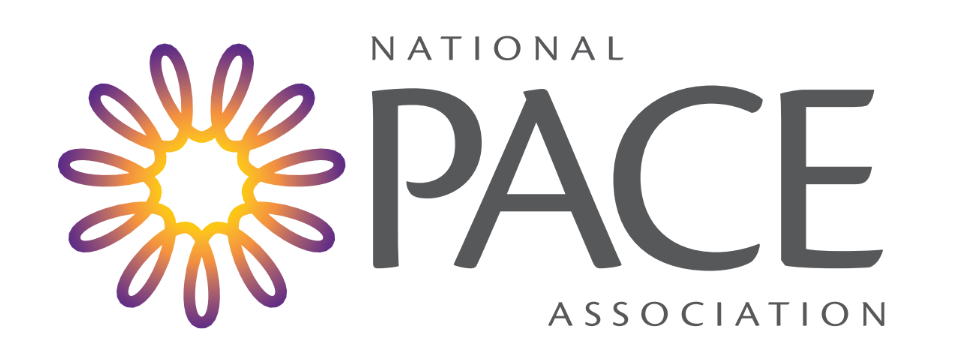About Us
LIVING AT HOME: Your Goal, Our Priority

PACE is a program that allows older adults who need nursing home care to continue living in their homes as long as possible.
The National PACE Association (NPA) provides leadership and support for the growth, innovation, quality and success of the PACE model of care.
Our vision is for the PACE model of care to be recognized among consumers, health care providers and government leaders as the most innovative, accessible, valuable and effective model of care promoting the highest level of independence for individuals with significant health care needs.
Since 1994, NPA has represented the interests of Programs of All-Inclusive Care for the Elderly (PACE) in a rapidly changing health care environment.
NPA encourages and supports responsible PACE growth through advocacy, quality and workforce initiatives,
with a steadfast commitment to diversity, equity and inclusion in all that we do.
Our Core Activities
in support of PACE sustainability and growth through appropriate payment, regulation and innovation policies
that support the efficiency, effectiveness and success of PACE programs
that allow PACE programs to understand and respond appropriately to opportunities and challenges
with operational, financial, regulatory, policy, data analysis and quality improvement issues and activities
among PACE professionals on effective and innovative strategies, operations and practice
History
The PACE model of care can be traced to the early 1970s, when the Chinatown-North Beach community of San Francisco saw the pressing needs for long-term care services by families whose elders had immigrated from Italy, China and the Philippines. William Gee, DDS, a public health dentist, headed the committee that hired Marie-Louise Ansak in 1971 to investigate solutions. Along with other community leaders, they formed a nonprofit corporation called On Lok Senior Health Services to create a community-based system of care. On Lok is Cantonese for "peaceful, happy abode."
- 1971
William Gee, DDS, and two others execute articles of incorporation for the nonprofit Chinatown-North Beach Health Care Planning and Development Corporation (later renamed On Lok Senior Health Services) and retain Marie-Louise Ansak to study the feasibility of building a nursing home in the community. She finds a nursing home would be financially infeasible and culturally inappropriate. Instead, she obtains funding to train health care workers in cooperation with the University of California San Francisco. She also outlines a comprehensive system of care combining housing and all necessary medical and social services based on the British day hospital model.
- 1973
On Lok opens one of the nation’s first adult day centers in San Francisco.
- 1974
On Lok begins receiving Medicaid reimbursement for adult day health services.
- 1978
The On Lok Model of Care expands to include complete medical care and social support of nursing home-eligible older individuals.
- 1979
On Lok receives a four-year grant from the Department of Health and Human Services to develop a consolidated model of delivering care to persons with long-term care needs.
- 1986
Federal legislation extends the new financing system and allows 10 additional organizations to replicate the On Lok service delivery and funding model in other parts of the country.
- 1987
The Robert Wood Johnson Foundation, the John A. Hartford Foundation and the Retirement Research Foundation provide funding to On Lok and the first replication sites to support their efforts.
- 1990
The first Programs of All-Inclusive Care for the Elderly (PACE) receive Medicare and Medicaid waivers to operate.
- 1994
With the support of On Lok, the National PACE Association (NPA) is formed. 11 PACE organizations are operational in nine states.
- 1996
21 PACE programs are operational in 15 states.
- 1997
The Balanced Budget Act of 1997 establishes the PACE model as a permanently recognized provider type under both the Medicare and Medicaid programs.
- 1999
Interim Regulation is published in November. 30 PACE programs are operational in 19 states.
- 2000
The Robert Wood Johnson Foundation and the John A. Hartford Foundation fund the PACE Expansion Initiative to assist NPA in expanding the benefits of the PACE model of care to more families in need.
- 2001
Alexian Brothers Community Services in St. Louis becomes the first PACE provider to become a full, permanently recognized part of the Medicare and Medicaid programs.
- 2006
Final Regulation is published in November. Congress awards grants of $500,000 to 15 organizations for rural PACE expansion.
- 2014
107 PACE programs are operational in 32 states.
- 2015
The PACE Innovation Act is passed by Congress and signed into law by President Obama. 116 PACE programs are operational in 32 states.
- 2018
123 PACE programs are operational in 31 states serving an estimated 45,534 participants.
- 2019
PACE Final Rule is published.
